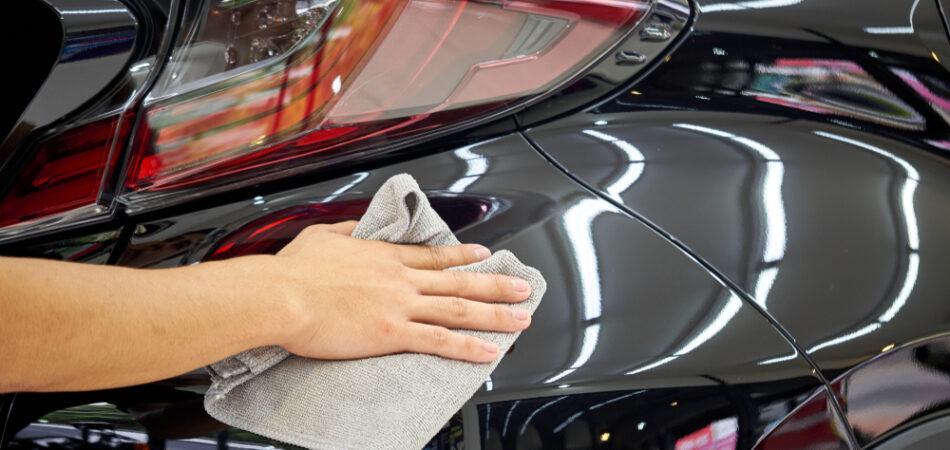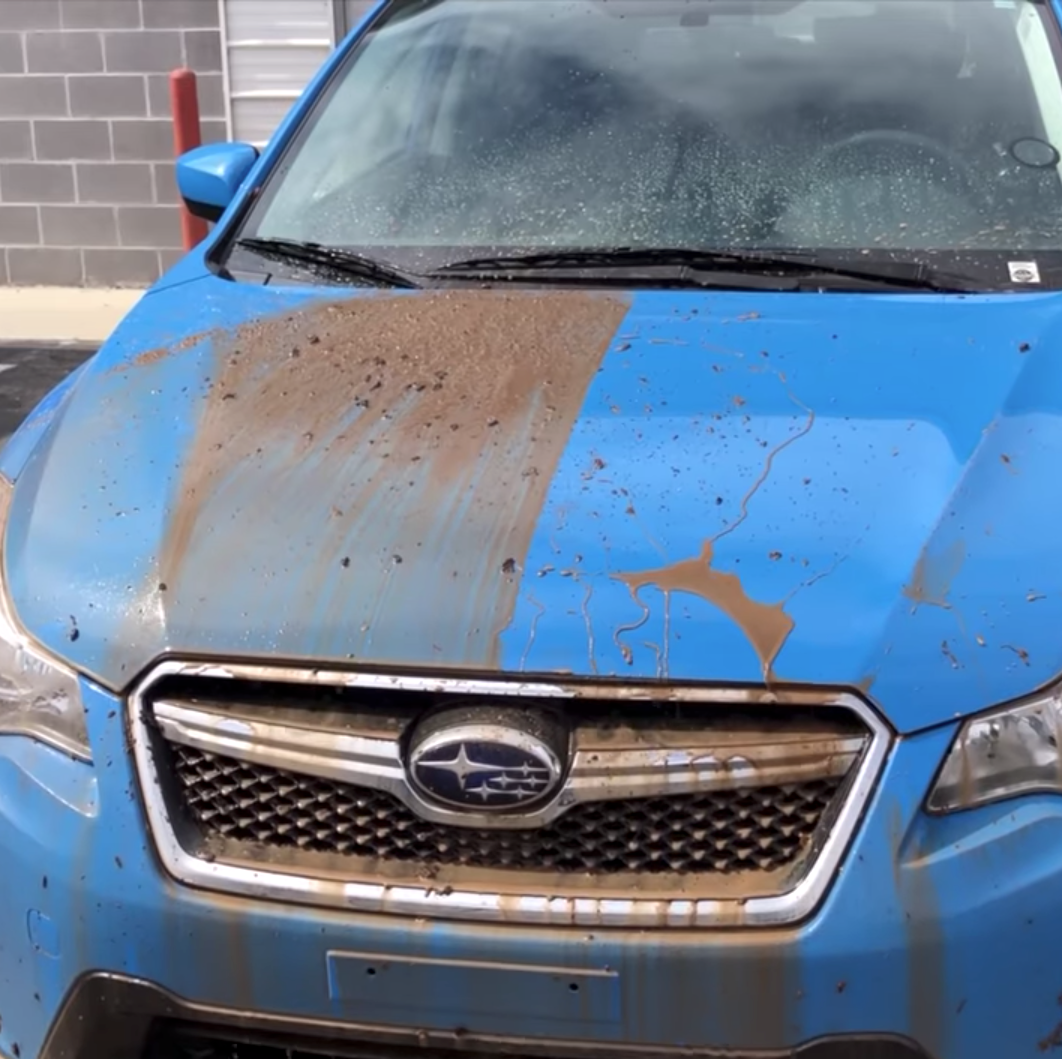Why Ceramic Coating Is Essential for Maintaining Your Car’s Paint
Why Ceramic Coating Is Essential for Maintaining Your Car’s Paint
Blog Article
Ceramic Finish vs. Traditional Wax: Which Supplies Much Better Long-Term Security?
The discussion between ceramic layers and traditional wax for lorry security has actually amassed significant attention amongst auto enthusiasts and specialists alike. While both serve the purpose of safeguarding paint, their distinctions in durability, application, and long-lasting maintenance prices might affect a consumer's selection. Ceramic finishes boast superior long life and resistance to ecological factors, yet the intricacy of their application questions about ease of access and usefulness. As we check out these contrasting choices, it ends up being necessary to take into consideration not only the immediate benefits but additionally the effects for car care in time.
Review of Ceramic Finishing
Ceramic layer has actually gotten significant appeal amongst auto lovers and detailers alike because of its innovative protective high qualities. This cutting-edge innovation is made to produce a durable, hydrophobic guard over a lorry's paint surface area, significantly improving its resistance to ecological impurities such as dirt, UV rays, and chemical stains. Unlike standard wax, which supplies a momentary layer of protection, ceramic finishings bond at a molecular degree with the paint, supplying resilient longevity-- frequently prolonging beyond 2 years with correct maintenance.
The application process involves careful preparation of the lorry's surface area, including cleaning and brightening to make sure optimal attachment. Once used, the coating remedies to develop a durable layer that not only includes deepness and gloss to the paint yet likewise simplifies maintenance. With its hydrophobic homes, ceramic finish enables water and dust to glide off more conveniently, reducing the frequency of cleans and lessening the threat of swirl marks.
Moreover, ceramic finishings are readily available in different solutions, enabling users to pick products tailored to their certain needs and preferences. On the whole, ceramic layer stands for a substantial advancement in paint protection technology, delivering remarkable performance compared to traditional options.
Summary of Traditional Wax
Generally pertained to as a staple in automobile care, wax functions as a prominent selection for those seeking a straightforward approach to improve and safeguard their automobile's paint - ceramic coating. Automotive wax generally consists of all-natural components, such as carnauba, or artificial compounds, made to develop a protective layer on the surface of the paint. This layer not just enhances the car's gloss and shine but additionally supplies a barrier versus ecological impurities
The application of wax is normally straightforward, making it available for both experts and Do it yourself enthusiasts. When used, wax requires a curing period, after which it solidifies to develop a protective shell.
Nevertheless, while wax works for boosting the aesthetic allure of a car, it is crucial to keep in mind that the defense it offers might demand extra frequent reapplication compared to alternate products, such as ceramic coatings. On the whole, typical wax remains a preferred choice for those focusing on convenience of usage and prompt aesthetic renovation.
Durability and Longevity Contrast
While both ceramic finishes and traditional wax deal protective advantages for automobile paint, their toughness and durability vary considerably. Standard wax, usually made from natural carnauba or synthetic polymers, normally offers a protective layer that lasts roughly three to 6 months. This relatively short lifespan requires regular reapplication to preserve ideal security.
In comparison, ceramic finishes are crafted from innovative nanotechnology, developing a covalent bond with the paint surface. This leads to a robust, hydrophobic layer that can endure for two to 5 years, depending on the product and environmental problems. The superior resilience of ceramic finishes is attributed to their chemical structure, which provides improved resistance to scrapes, UV rays, and oxidation.

Defense Versus Environmental Factors
Shielding a lorry's paint from ecological elements is vital for keeping its appearance and worth in time. Autos are constantly exposed to a selection of elements, consisting of UV rays, bird droppings, tree sap, acid rain, and roadway gunk, all navigate to this website of which can endanger the integrity of the paintwork.
Ceramic layers offer a durable protection against these environmental assailants. Unlike conventional wax, which can degrade swiftly under UV direct exposure, ceramic coverings create a durable, hydrophobic layer that withstands the damaging impacts of sunshine and ecological contaminants. This innovative technology produces a chemical bond with the automobile's surface area, using exceptional security that lasts for years, also in rough conditions.
Typical wax, while simpler to use, typically calls for regular reapplication and offers limited resistance to impurities and UV rays. Gradually, it can damage down, leaving the paint prone to scratches and oxidation. In contrast, ceramic coverings keep their protective top qualities longer, substantially decreasing the danger of paint damages and guaranteeing that the automobile keeps its aesthetic allure. Therefore, ceramic finishes are significantly recognized as the premium option for long-lasting defense against ecological variables.
Application and Upkeep Differences
The techniques of application and succeeding maintenance for ceramic layers and typical wax differ significantly, affecting the overall customer experience and performance of each item. Ceramic coverings require a more detailed application procedure, normally entailing surface area prep work that consists of washing, sanitizing, and polishing the car. As soon as the surface area is ready, the ceramic finishing is used in a regulated atmosphere, often requiring expert experience to ensure proper curing and bonding to the paint.

While both products boost lorry look, the longer-lasting security used by ceramic finishings might warrant their first investment, regardless of the even more requiring application process. check these guys out Alternatively, standard wax continues to be a preferred choice for those seeking a simpler, albeit short-term, solution.

Conclusion
To conclude, ceramic finishings demonstrate significant benefits over standard wax in regards to durability and environmental management. With a lifespan prolonging 2 to 5 years and premium resistance to UV rays, dust, and chemical stains, ceramic layers offer a much more effective solution for long-term car maintenance. Although the application procedure may need expert know-how, the resulting cost financial savings and minimized frequency of reapplication underscore the value of ceramic layers for those seeking optimal lorry protection.
The dispute in between ceramic coatings and typical wax for vehicle security has amassed significant attention among automotive enthusiasts and specialists alike. Unlike traditional wax, which offers a short-term layer of defense, ceramic layers bond at a molecular degree with the paint, offering lasting toughness-- often prolonging past 2 years with proper upkeep.
While both ceramic layers and conventional wax offer safety advantages for auto paint, their toughness and long life differ considerably. For vehicle lovers looking for long-lasting security, ceramic finishes offer an engaging advantage over traditional this page wax items.
In conclusion, ceramic layers demonstrate considerable benefits over conventional wax in terms of resilience and ecological protection.
Report this page